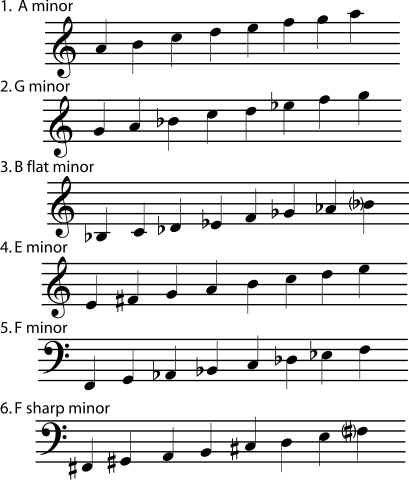
The circle of fifths is a convenient visual for remembering major key signatures.In flat key signatures, the second-to-last flat is the tonic. In sharp key signatures, the last sharp is a half step below the tonic (the first note of a scale).



Scale degrees are solmization syllables notated by Arabic numerals with carets above them.Major scales are named for their first note (which is also their last note), including any accidental that applies to the note.A major scale is an ordered collection of half and whole steps with the ascending succession W‑W‑H‑W‑W‑W‑H.


 0 kommentar(er)
0 kommentar(er)
